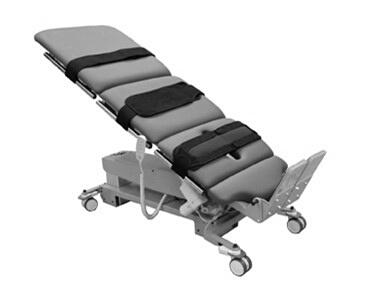The tilt table allows the safely strapped human body to be moved from flat to upright in small gradations. The effect is to progressively add gravity loading to the body.
Used in medicine to challenge and test blood pressure and breathing function, it is also used in physiotherapy during neurological and ICU care to facilitate weight bearing, prevent muscle contractures, improve lower limb strength and increase arousal. Health benefits of using the tilt table, especially for persons with spinal cord injury, include positive effects on soft tissue and management of increased muscle tone, improved bladder and bowel function, strengthening of antigravity muscles and postural control as well as preventing bone demineralisation.
Home tilt tables that took patients from flat to upside down were sometimes used by physiotherapists to create a traction effect on the spine. Upside down tilting tables have also been used by physiotherapy researchers to mimic the effects of zero gravity for space research whilst on earth.
The inventor of the tilt table is unknown.
Description provided by Rehan Hall of South Africa and Glenn Ruscoe of Australia.

